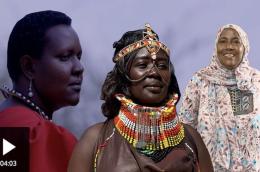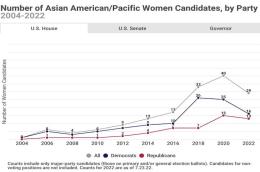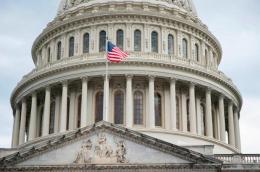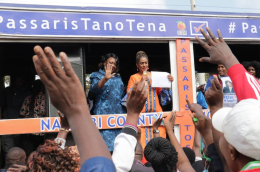Elections
Main navigation
Three Kenyan women from marginalised communities share their experiences running for political office in the forthcoming general election and describe how they are determined to overcome their challenges.
They describe their setbacks as unique compared to what their counterparts in urban areas face.
Click here to access the video.
As Kenya prepares to vote in a new president next month, we take a closer look at the role of women in the country’s politics. In Uganda, we bring you a report on efforts to respond to a major hunger crisis in the country’s northeast. And the Ivorian artist Frédéric Bruly Bouabré is being remembered in New York and in Paris with different retrospective exhibitions.
Click here to access the video.
The 2022 midterms have led to some new records for women candidates for the U.S. House, U.S. Senate, and governor in various race and ethnicity groups, according to an analysis of candidate filings from CAWP. Asian American/Pacific Islander, Black, Latina/Hispanic, and white women have all set new candidacy records this year, though not at all levels of office.
CAWP began collecting data on candidate race in 2004 using a system of self-identification for candidate race and ethnicity determination. Because this data relies primarily on candidate response to CAWP’s self-ID query and our queries occasionally go unanswered, there remain a small number of candidates for whom we were unable to determine racial identification. This is alluded to when we say “at least” preceding a reported figure below. Additionally, because candidates may, for various reasons, exit political races and no longer appear on ballots, these numbers can change slightly moving forward.
Beginning this year, CAWP no longer reports an aggregate number of “women of color” in our data collections on candidates and officeholders and instead provides disaggregated data for all women by race and ethnicity. This change was guided by our desire to move away from treatment of women as monolithic and challenge the centering of whiteness as a default racial/ethnic category. Of particular note here, because multiracial women are included in counts for each group with which they identify, adding the numbers below will not yield the total number of women of color running for various offices in this year’s midterms.
Click here to access the data.
(CNN) 2022 marks a record high for women running in gubernatorial and Senate races, but the total number of women running for the House of Representatives fell slightly from previous cycles, according to an analysis by the Center for American Women and Politics at Rutgers University.
While Republican female candidates broke records in all three kinds of contests, the number of Democratic women running for office did not exceed prior years' totals.
Chelsea Hill, data services manager at CAWP, said Tuesday this disparity more likely reflects "partisan trends," with fewer Democratic candidates and more Republicans running overall, instead of a cause relating specifically to women.
Click here to read the full article published by CNN on 27 July 2022.
Women MPs like Esther Passaris face threats, slurs and body-shaming on social media ahead of Aug. 9 vote.
- Online abuse included sexual imagery and public shaming
- Some women candidates abandon social media due to abuse
- Social media platforms, authorities urged to crack down
By Nita Bhalla
NAIROBI, July 14 (Thomson Reuters Foundation) -When Kenyan politician Esther Passaris posted a loving tribute to her late father on Twitter, trolls responded with a barrage of abuse over an accompanying "sexualised" photograph of the 57-year-old in a black kaftan walking alone on a white sandy beach.
"Papou ... as you traverse the high seas, know that I will forever be your baby girl, #RIPDad," wrote Passaris, who represents Nairobi County, next to the contemplative image in which the sea breeze had slightly exposed one thigh.
Click here to read the full article published by Thomson Reuters Foundation on 14 July 2022.
Sunday’s Upper House election saw a record 35 seats go to women, with veteran lawmakers and new contenders of all stripes voted in.
In a race overshadowed by the murder of former Prime Minister Shinzo Abe — who during his tenure pushed the slogan “a society where every woman can shine" — a record 181 women ran for the Upper House, where over half of the 245 seats were up for grabs.
The number of seats won by female candidates — 21 from electoral districts and 14 through proportional representation — is the largest in the upper chamber’s history, up from 28 in the previous two elections, held in 2016 and 2019.
Click here to read the full article published by Japan Times on 11 July 2022.





